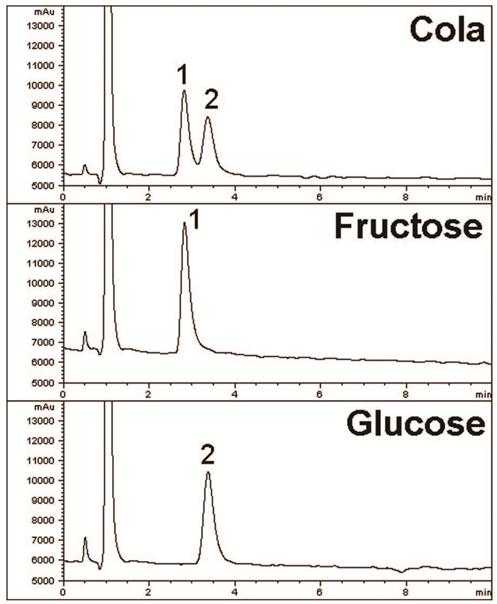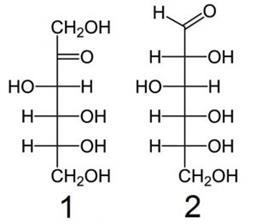The high sugar content of soda beverages can be observed in this Chromatographic separation of Fructose and Glucose in cola. The two Sugars are retained and separated with the use of the Cogent Amide Column. Data from reference standards is also shown for peak identity confirmation.
A preconditioning protocol with a TEA-based Mobile Phase was found to improve the peak shape of Fructose. Refractive Index is an ideal choice for this application because the Sugars are UV-transparent and their concentrations are high enough (even with a 5X dilution) to be easily observed with a relatively insensitive detector such as this.
The large Peak at the Solvent front is characteristic of RI detection when the sample diluent differs from the Mobile Phase. In this case, a diluent with higher water content than the Mobile Phase was chosen for the purpose of analyte solubility.


PEAKS:
1. D-Fructose
2. D-Glucose
Method Conditions
Column: Cogent Amide™, 4μm, 100Å
Catalog No.: 40036-05P
Dimensions: 4.6 x 50mm
Mobile Phase:
--5% DI Water / 95% Acetonitrile (v/v),
--15 min preconditioning with 10% DI Water / 90% Acetonitrile / 0.1% Triethylamine (TEA) (v/v)
Injection vol.: 1μL
Flow rate: 1.0 mL/minute
Detection: Refractive Index
Sample: Coca-Cola soda sample was filtered (0.45µm, nylon) and diluted 1:5 with a Diluent of 50/50 Acetonitrile / DI Water.
t0: 0.8 minutes

Attachment
No 358 Fructose and Glucose in Coca-Cola.pdf 0.5 Mb Download File
